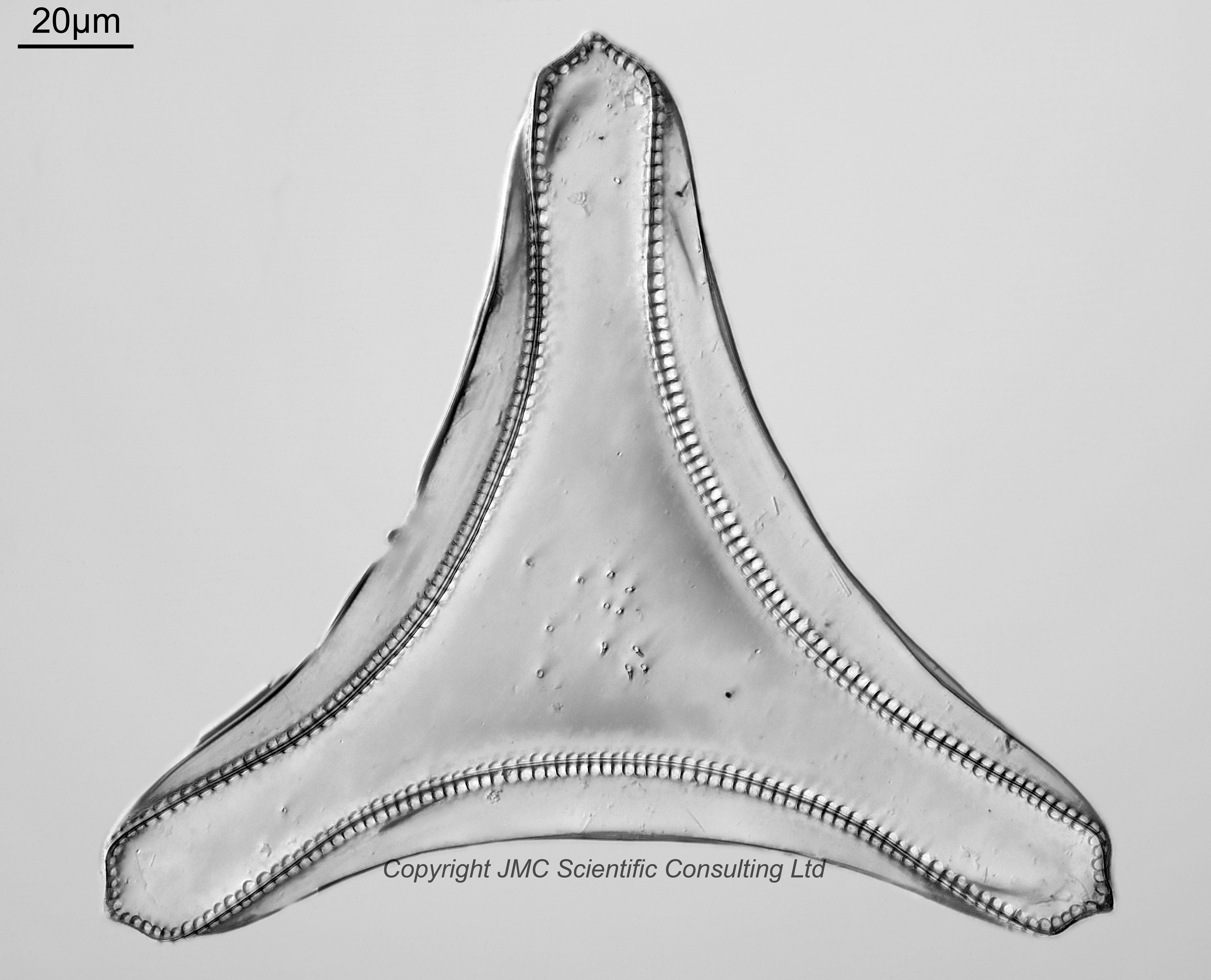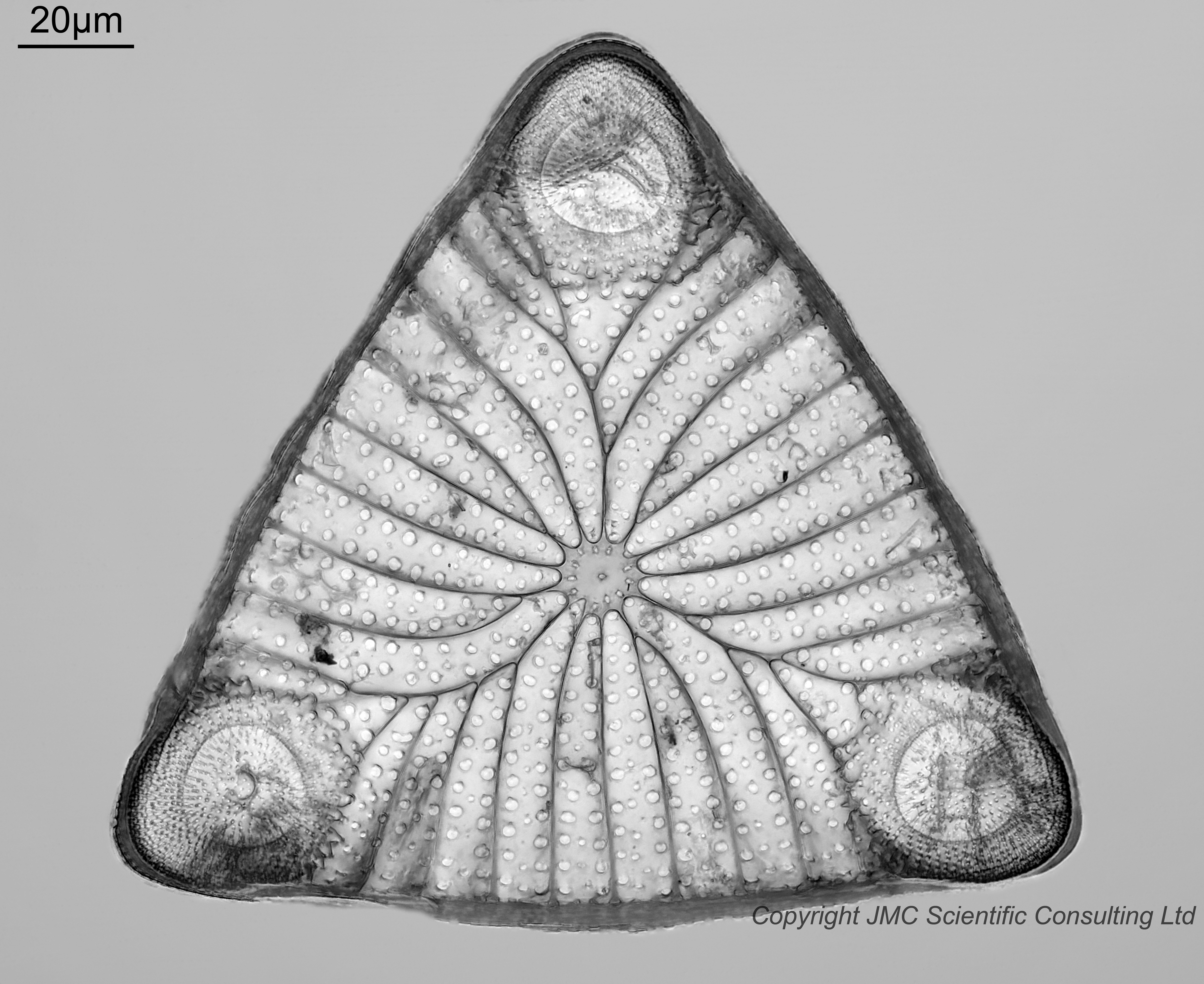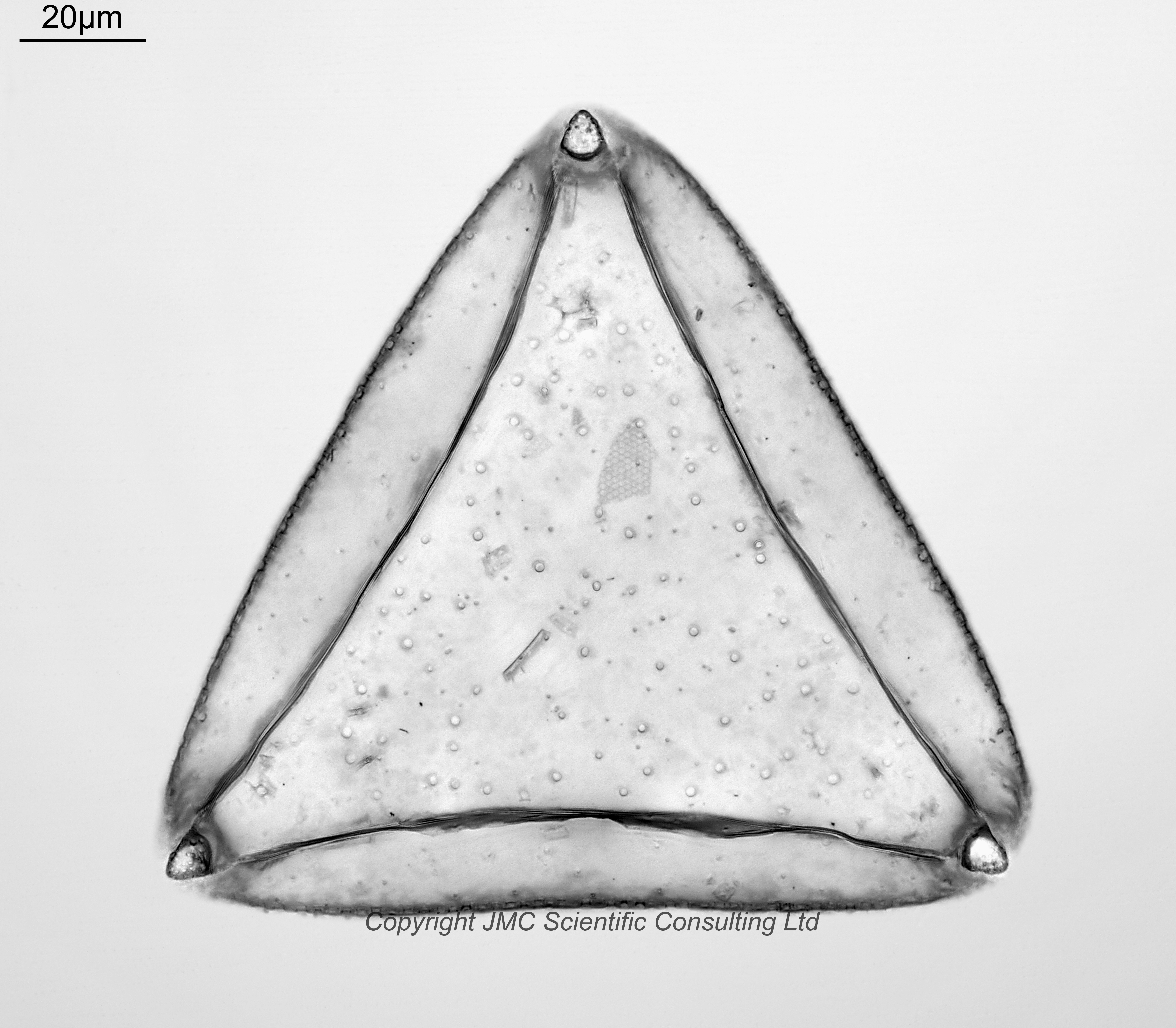







A type slide from Kamischev, Russia. Prepared by RI Firth. Mounted in Styrax and dated 1942. Wide range of species present. Olympus BHB microscope using 450nm LED light. Images of single diatoms done using a 63x Leitz Pl Apo NA 1.40 objective, oil immersion. Olympus Aplanat Achromat condenser, oil immersion, brightfield except for the Trinacria muelleri var. russica which was done using oblique lighting. 2.5x Nikon CF PL photoeyepiece. 11mm removed from the tube to the camera, to increase the field of view slightly and enable the larger ones to be imaged with the 63x objective. Monochrome converted Nikon d850 camera. Images stacked in Zerene (Pmax).
As there was no species list on the slide I have attempted to name them. Where I am less certain there are question marks after the names. Some details about the naming given below.
Trinacria muelleri var. russica. ID from Potapova, M., Veselá, J., Smith, C., Minerovic, A., Aycock, L. (Editors) 2024. Diatom New Taxon File at the Academy of Natural Sciences (DNTF-ANS), Philadelphia. Retrieved on June 26, 2024, from http://dh.ansp.org/dntf, with the specific page for it here. Looks to be very similar to Ditylum grovei from Oamaru.
Entogoniopsis polycistinora. Good reference for this – Jakub Witkowski, Patricia A. Sims, Nina I. Strelnikova & David M. Williams, “Entogoniopsis gen. nov. and Trilamina gen. nov. (Bacillariophyta): a survey of multipolar pseudocellate diatoms with internal costae, including comments on the genus Sheshukovia Gleser”, (Phytotaxa 209), 89 pp, Figures 44-49, available here.
Kittonia granulata. ID from Potapova, M., Veselá, J., Smith, C., Minerovic, A., Aycock, L. (Editors) 2024. Diatom New Taxon File at the Academy of Natural Sciences (DNTF-ANS), Philadelphia. Retrieved on June 26, 2024, from http://dh.ansp.org/dntf, with specific page here.
Odonotropis cristata (?). This is an Odontotropis sp., and the reason I mentioned O. cristata, is because of the book “Die Diatomeen der Fur-Formation (Alttertiär) aus dem Limfjord-Gebet, Nordjütland/Dänemark” by Marion Homann, which shows an example in Plate 29, Figure 5 which looks very like this.
Trinacria heibergii (?). I think this is either Trinacria heibergii, or Trinacria jordanii (T. jordanii is from Schmidt’s Atlas, Plate 204, Figure 7). The reason I am more inclined to think T. heibergii, is because of the book “Die Diatomeen der Fur-Formation (Alttertiär) aus dem Limfjord-Gebet, Nordjütland/Dänemark” by Marion Homann, which shows an example in Plate 48, Figure 4 which looks very like this.
Triceratium sp. (?). Not sure at all about this one, so am not narrowing it down further at the moment.